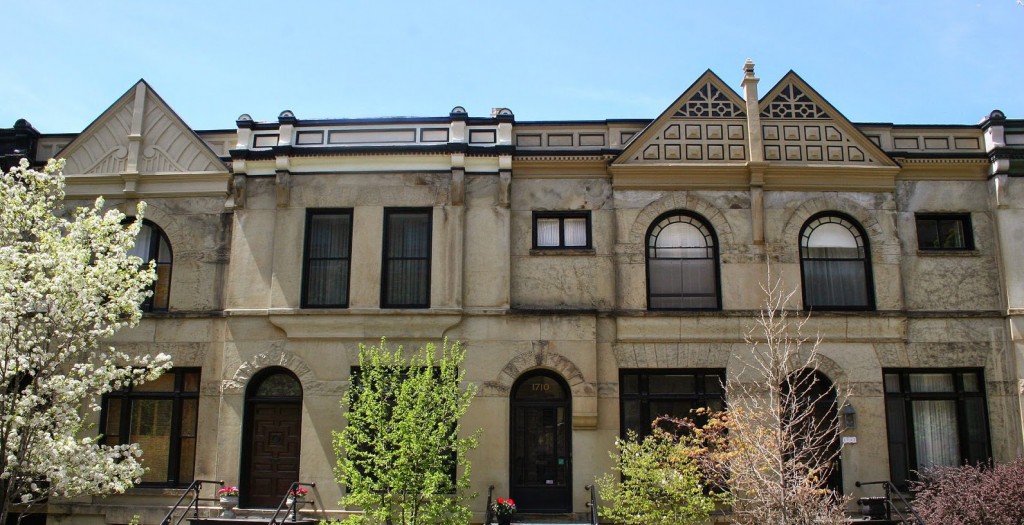“Making an Exhibition of Ourselves: Desiring Bodies, Practices and Histories” was the title of a panel sponsored by the Committee for LGBT History at this year’s American Historical Association’s Annual Meeting in New York. One of thirteen panels dedicated to “Promiscuous Interdisciplinarity,” the issues that participants debated ranged from the situated dynamics of teenage bullies and their victims to the challenges arising from writing a National Historic Landmark nomination for an LGBTQ site, the Henry Gerber House in Chicago (of which I was a co-presenter) to the significance of different neighborhoods and their populations to the history of Seattle’s Gay Pride. The diversity of the topics, partly due to last-minute changes in the panel’s composition, did not affect the overall concerns of the presentations, however. They all addressed how archives, exhibitions and historical sites operate as spaces through which ideas about LGBTQ identity can be renegotiated. Panel chair Don Romesburg of Sonoma State University identified “scale, spectacle, and spectatorship” as the threads that connected all three papers.

Independent scholar Jordy Jones opened the panel with his presentation “Willies Bully: Reflections on the Photographic Representation of Young Male Social and Sexual Violence.” His paper centered on the photograph of a reclining nude teenage boy, eyes closed, from the collection of Willie Walker, late founder of the San Francisco Bay Area Gay and Lesbian Historical Society, today the GLBT Historical Society. Jones’ speculations about the boy pictured – was he Walker’s bully? – led him to a meditation on the dynamics of queer bullying that was both poetic and to the point. Jones discussed the subject positions of bully, victim, and bystander that are implied in bullying itself as well as in media representations such as recent anti-bullying campaigns, and suggested that it was the victim, rather than the bully, that disrupts the social order.
Michelle McClellan and I (both University of Michigan) followed with our presentation “Queering Public History in a New National Landmark,” discussing our work on the nomination of the Henry Gerber House in Chicago as a new LGBT National Historic Landmark (NHL). A graduate class under McClellan’s direction nominated the Chicago property that was home to Henry Gerber and headquarters of his Society for Human Rights (SHR), the first incorporated organization for homosexual emancipation in the U.S., during its brief period of existence in 1924-1925. Sharing my perspective as a graduate student in the seminar, I discussed the scholarly and affective challenges that I experienced during the project. Namely, I explored how NHLs as physical places could and could not forge an emotional connection to individuals and moments that have left few other traces. Audience members picked up on the questions of if and how historic places can serve as affective entryways into history, and how to preserve or make visible the property’s historical marginality in light of gentrification.

Gentrification was an important backdrop to the changing scale, spectatorship, and route of Seattle’s Gay Pride as discussed by Kevin McKenna of the University of Washington in his paper “Business First, Gay Second: The Greater Seattle Business Association, Gay Pride Parades, and the Gentrification of Seattle’s Capitol Hill, 1981-1991.” His presentation traced Seattle’s queer demonstration from its beginnings as a Gay March in downtown Seattle in the mid-1970s through its relocation to gay neighborhood Capitol Hill as the Broadway Pride Parade in the early 1980s to its return to downtown as the Seattle Pride Parade in the mid-2000s. The change of location, McKenna argued, mirrored shifting centers of queer life in Seattle, as well as shifting politics in the LGBT movement. Whereas the early marches were political demonstrations focused on the demands of gay liberation, tensions later arose between Seattle’s gay business association and radical activists, who articulated the need for diverse issues and communities to be represented. The latest move of the parade back to downtown Seattle, McKenna stressed, did not signify a renewed turn to politics so much as the arrival of the LGBT movement in the mainstream and a spectacle for queers and tourists alike. The theme of gentrification resonated strongly with audience members, who pointed to similar developments in other U.S. cities, most notably San Francisco. Others suggested interpreting gay business associations not as inherently non-political, instead understanding them as a form of emancipatory politics comparable to black economic associations.
In the end, these three papers all spoke to scale, spectacle, and spectatorship. They also addressed space: from the triangulated positions of bully, victim, and bystander as perpetuated in the media, the streets and in neighborhoods of Chicago and Seattle. Different as their contributions were, the panel’s participants made three compelling cases for what queer studies has to gain by taking space seriously as a category of analysis: a more complex understanding of the situatedness of queer lives between inside and outside, margins and center, symbolically as well as in the historic and contemporary realities of the houses, streets, and neighborhoods of our cities.
Andrea Rottmann is a PhD candidate in German Studies at the University of Michigan. Andrea is interested in the transnational histories of sexuality and the homosexual emancipation, gay liberation and lgbt rights movements in Germany and the United States in the twentieth century. More broadly, she thinks about questions of representation, identity, and recognition, about the relationship of the past and the present and about the ways in which history is being told in- and outside of academia.

NOTCHES: (re)marks on the history of sexuality is licensed under a Creative Commons Attribution-NonCommercial-NoDerivatives 4.0 International License.
Based on a work at www.notchesblog.com.
For permission to publish any NOTCHES post in whole or in part please contact the editors at NotchesBlog@gmail.com




